
To test the gaming performance of the Asus MG279Q we used a gaming PC with an AMD Sapphire Vapor-X R9 290X Radeon graphics card and an Intel Core i7 4790k CPU, running Windows 7.
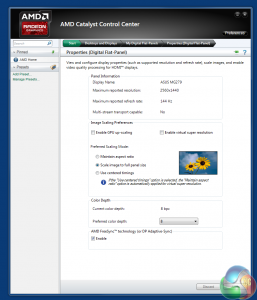
To enable FreeSync in games, the setting in the Image menu of the monitor’s OSD needs to be turned on, along with a setting in AMD’s Catalyst Control Center (buried at the bottom of the page in Digital Flat Panel properties).
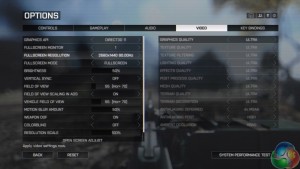
When you start a game with FreeSync enabled and the MG279Q connected, you’ll have additional refresh rate settings, with an option for 90Hz. If you choose a refresh rate above this, you’ll see a warning that FreeSync mode has been disabled.
You can check FreeSync is enabled at any time by opening the MG279Q’s OSD and looking at the refresh rate in the top right.
For all the talk about adaptive-sync technology, it’s remains a subtle effect in use. Motion feels smoother and animation looks better, but it’s most noticeable when you go back to standard fixed-refresh gaming.
To test how good the MG279Q is as a display in general, we used a Spyder4 Colorimeter, measuring the screen’s brightness, contrast levels and so on without calibrating it to see how it performs out of the box, then calibrated it and measured its colour levels again.
Its out-of-the-box image quality is excellent.
379 nits is an excellent brightness level, but the 770:1 contrast ratio is truly spectacular, with a black point of 0.49 at 100 per cent brightness.
It hits a gamma level of 2.1 exactly.
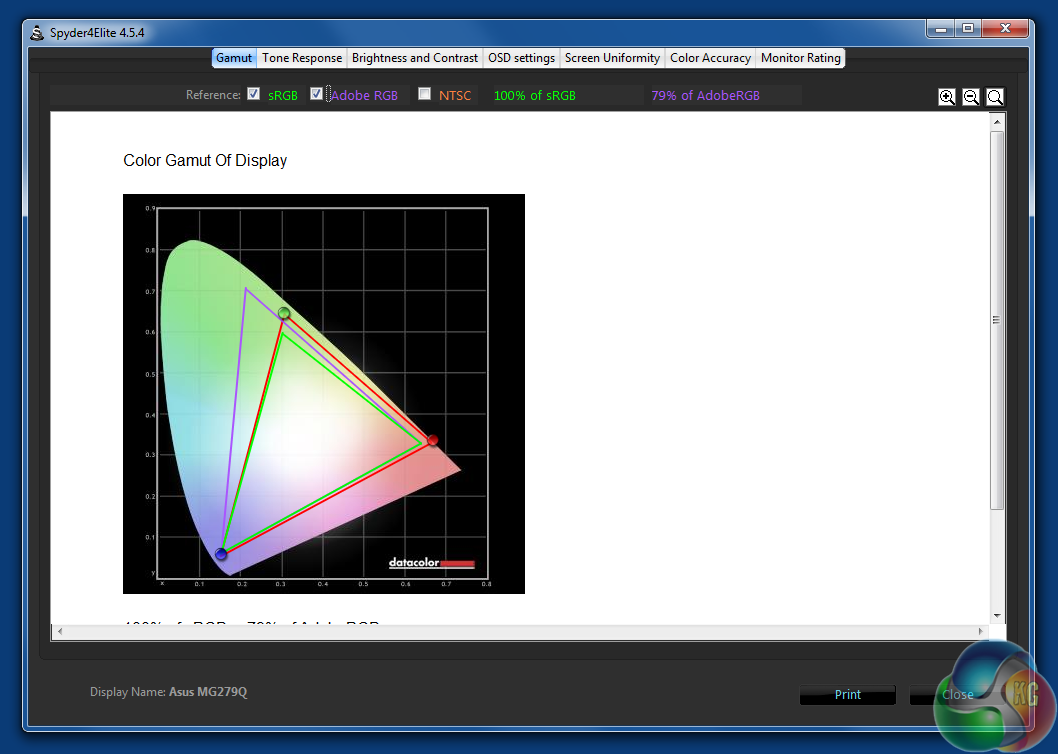
While offering 100 per cent sRGB and 79 per cent Adobe coverage.
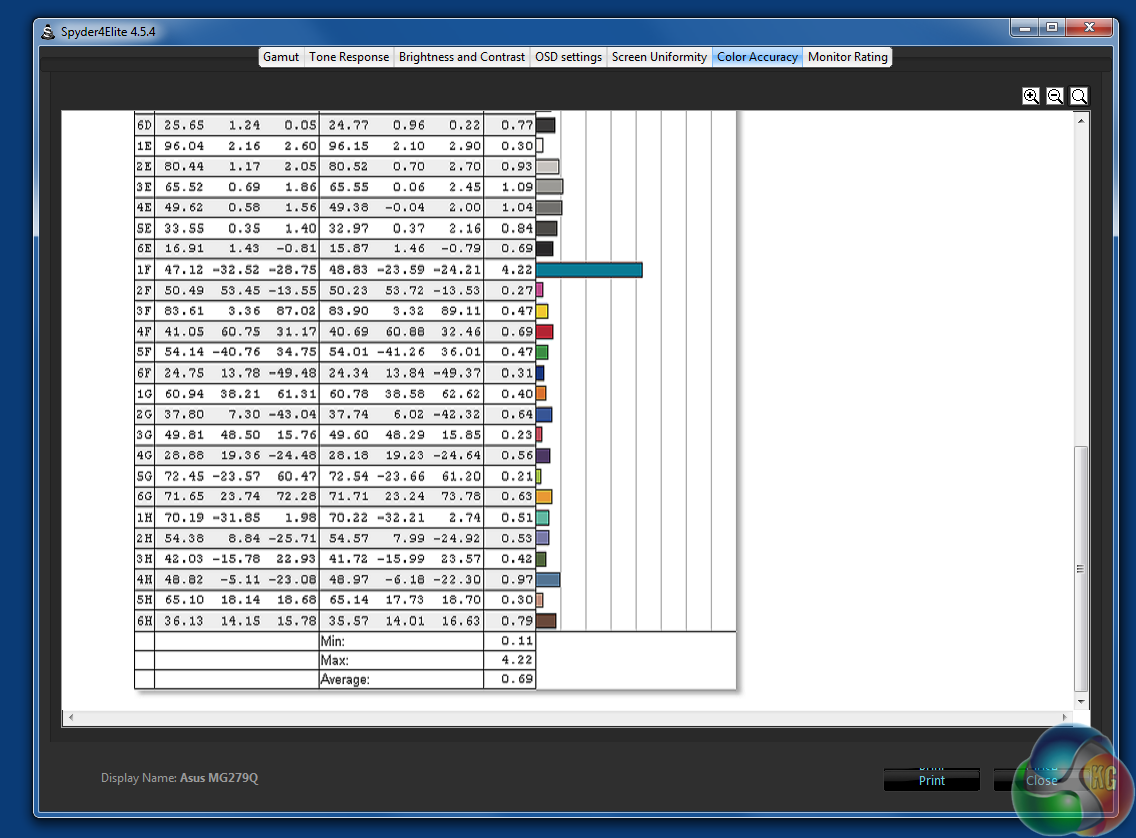
And best of all, a Delta E under 1. This would have been unheard of a few years ago, but is now possible with some modern panels.
The only minor downside to the image quality is the brightness uniformity, which varies between 8.1 and 15.3 per cent across the display. Not an issue for a gaming screen though.
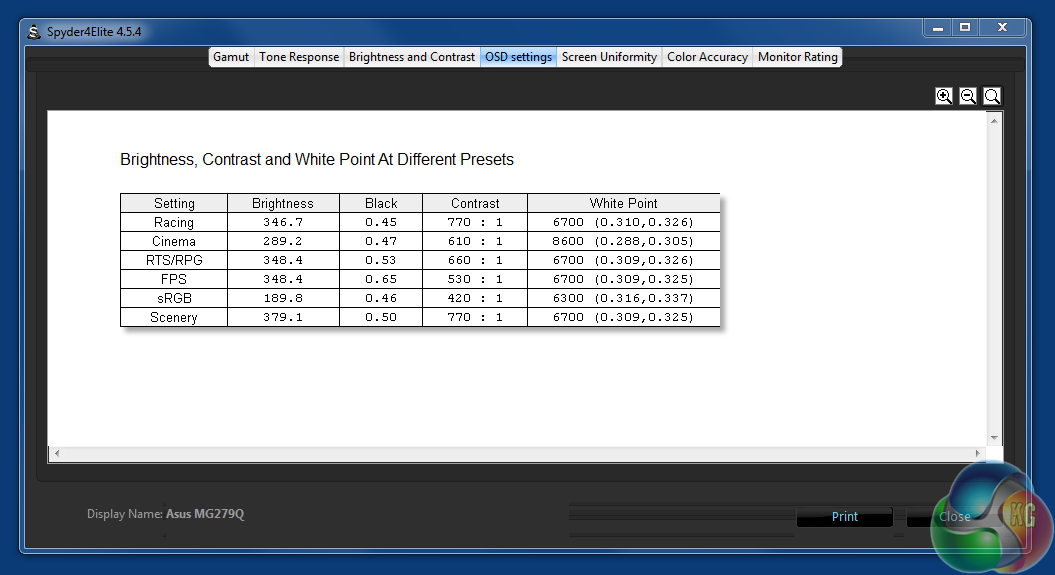
We also tested the monitor’s presets to give some idea of what happens to the image quality. The sRGB mode does noticeably dim the screen, as confirmed by our results.
After calibration, the picture quality remains roughly the same.
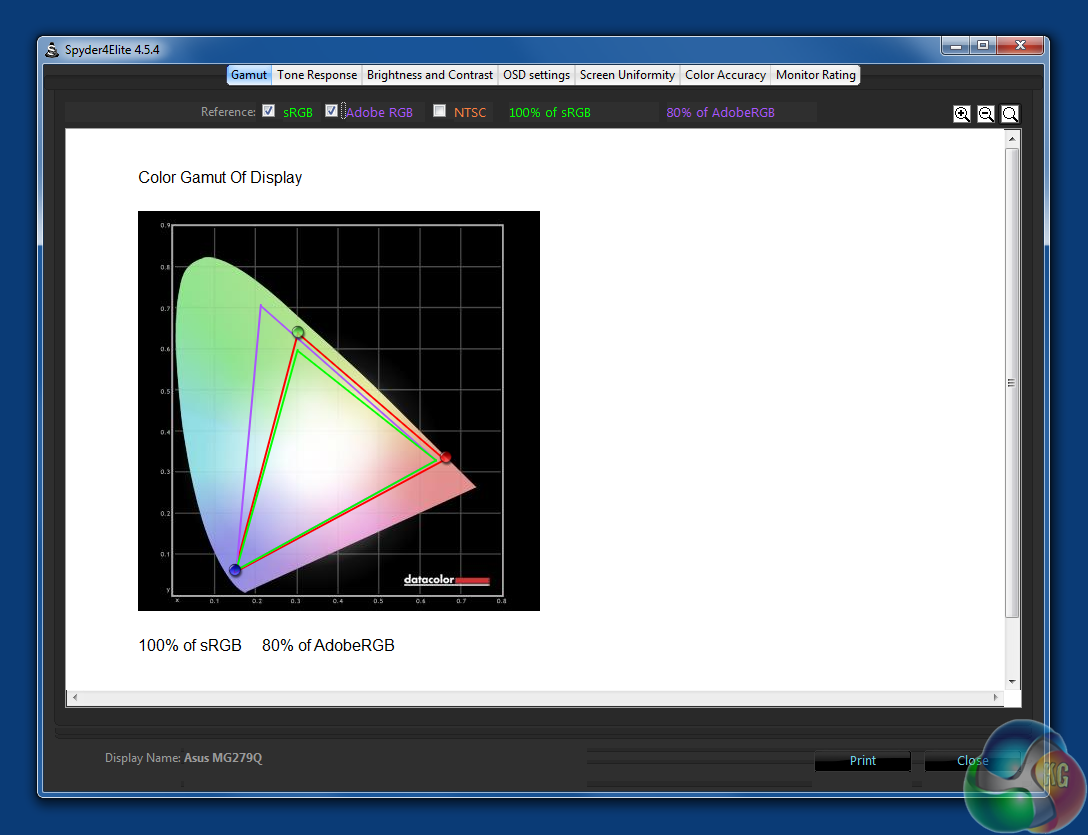
Adobe overage improves slightly.
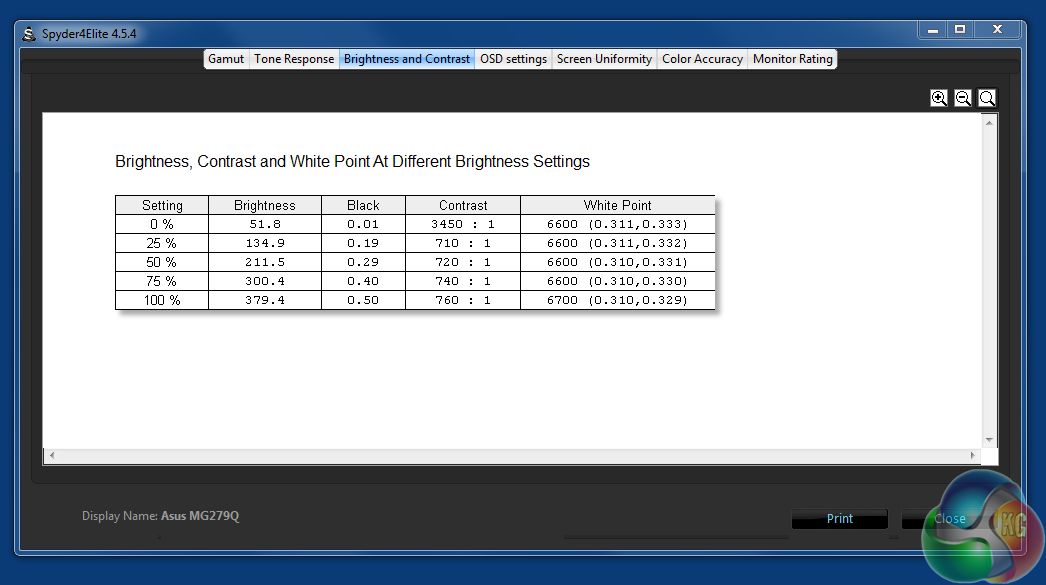
Brightness levels remain the same
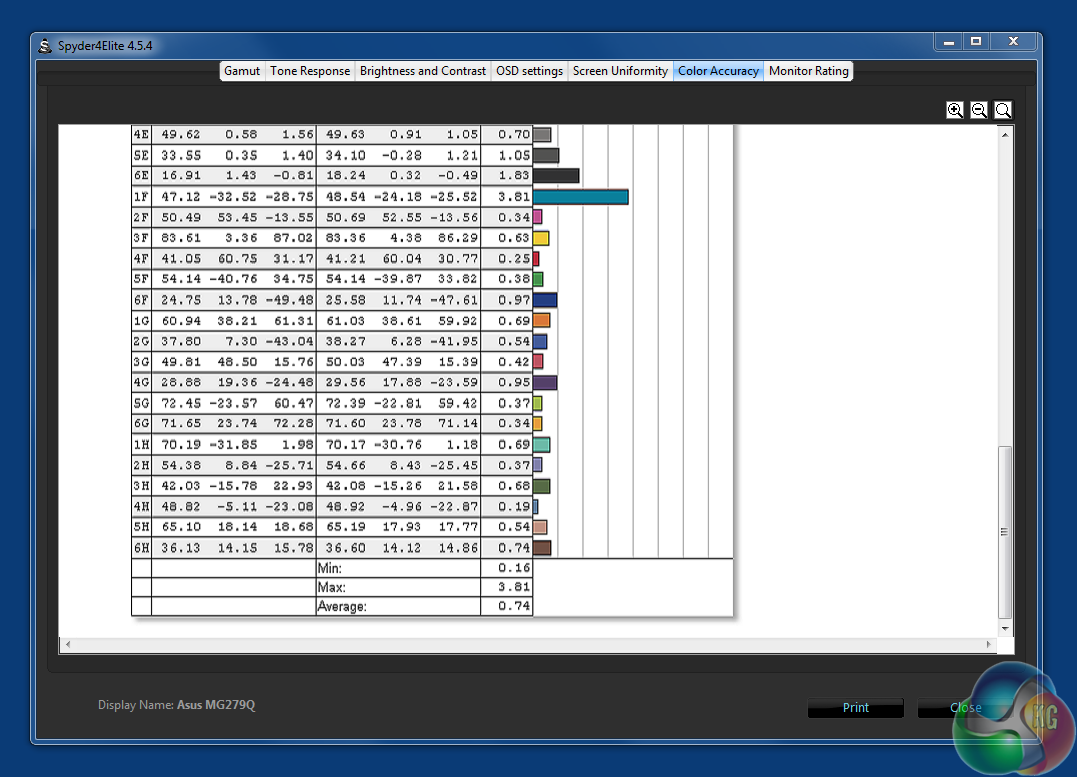
As does colour accuracy.
Finally at 100 per cent brightness we measured power consumption of 37.8 watts, which is fairly efficient for a 27-inch WQHD display.
 KitGuru KitGuru.net – Tech News | Hardware News | Hardware Reviews | IOS | Mobile | Gaming | Graphics Cards
KitGuru KitGuru.net – Tech News | Hardware News | Hardware Reviews | IOS | Mobile | Gaming | Graphics Cards


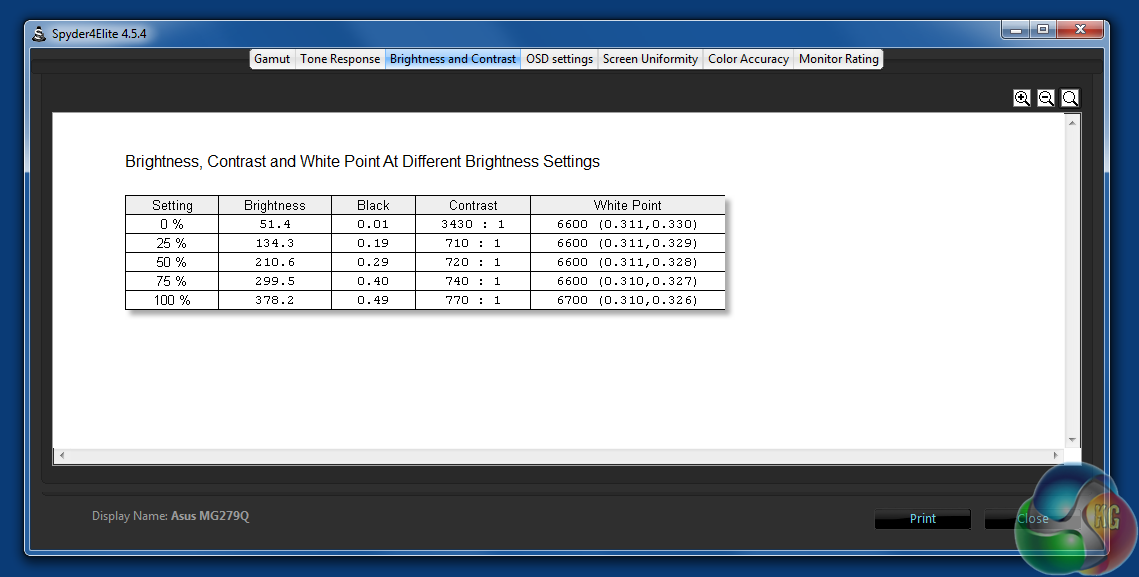
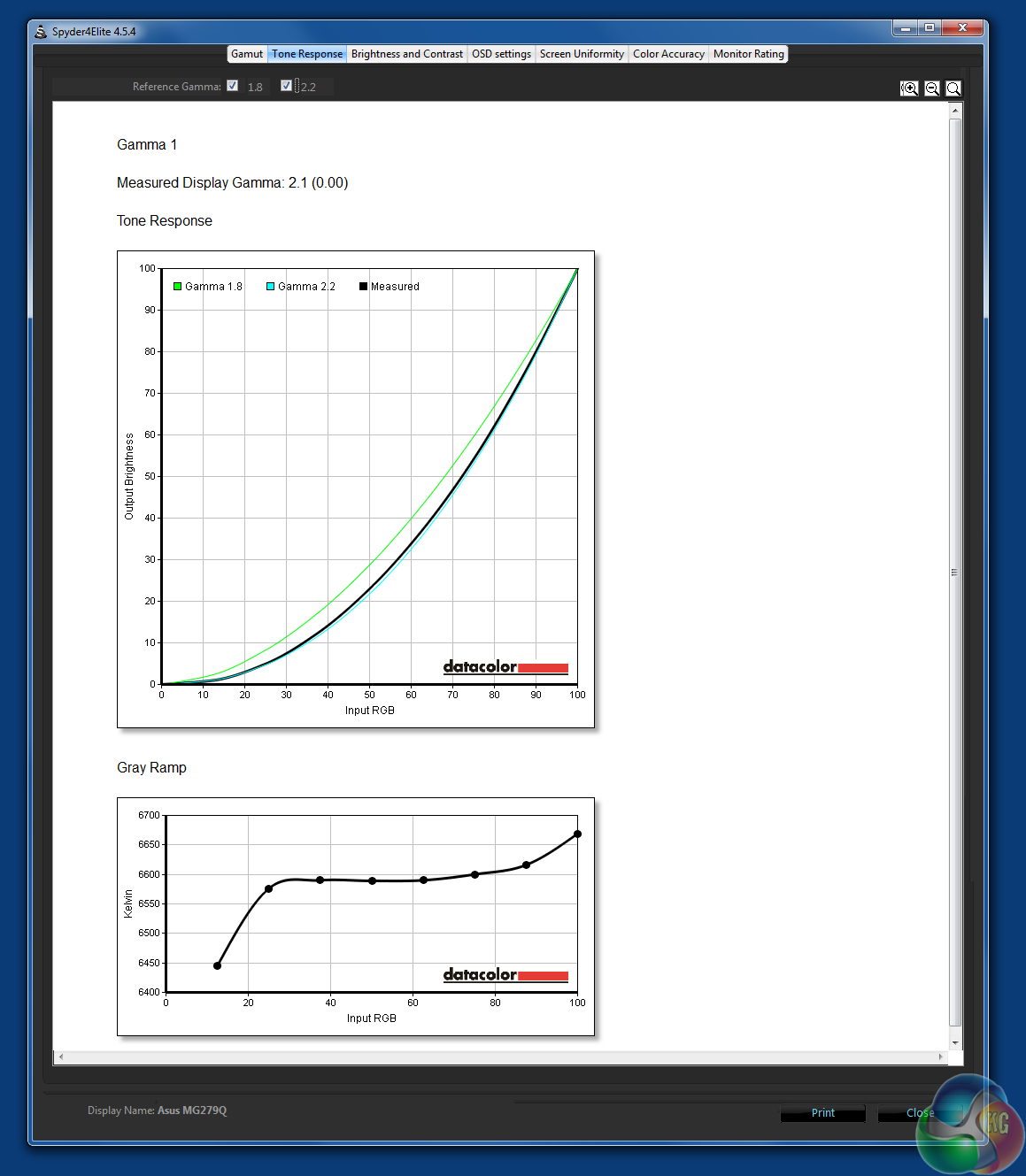

I have this monitor myself. Generally, at very high refresh rates G-Sync, Free-Sync etc. make less of a difference, in fact, at 144hz it’s almost impossible to notice a difference anymore. Running at 144hz and no sync, you won’t notice any tearing. At 144hz with V-Sync, you won’t notice any additional input lag or stuttering.
Can you dudes review U24E590D from Samsung ?
Wow, an 4K OLED 144Hz Freesync display would be nice indeed. Can’t wait for those monitors.
Your first choice kitguru
….All time hit the kitguru Find Here
“an IPS panel for great luminance and viewing angles, but with an ultra-low refresh rate”
um don’t you mean response time?
I like me kitguru………… ———Keep Reading
Too bad most display technology R&D is focused on mobile devices, SLCD and AMOLED is nonexistent in the consumer monitor world.
No offense, but you should not be reviewing adaptive sync monitors. Nothing in this “review” differs from fixed refresh monitor reviews.
Is it possible to enable freesync on this MG279Q when you select 1:1 aspect ratio?